Introduction
Pica, the consumption of non-food items, is a behavior frequently observed in individuals with autism. Research shows that children with autism are significantly more likely to exhibit pica behaviors than their neurotypical peers, driven by factors such as communication difficulties, sensory processing issues, and the need for self-soothing. Addressing these behaviors is crucial, as a significant percentage of autistic children also struggle with anxiety, hyperactivity, and other challenging behaviors.
Effective intervention strategies must consider the unique developmental context of each child, including family dynamics and broader social contexts. Ensuring that caregivers have the necessary resources to support their children is essential for fostering healthy development and well-being.
The Association Between Pica and Autism
Pica, a practice marked by the ingestion of non-nutritive objects, is often seen in individuals with developmental disorders. Studies show that individuals with autism are considerably more inclined to display pica tendencies in comparison to their neurotypical counterparts. This increased prevalence is attributed to a combination of factors, such as difficulties in communication and sensory processing, as well as the need for self-soothing. Addressing these behaviors is essential, as approximately 70% of autistic individuals also struggle with anxiety, hyperactivity, mood difficulties, and other challenging behaviors. Effective intervention strategies must consider the unique developmental ecology of each individual, including their family dynamics and broader social context. Ensuring that caregivers have the necessary resources to support their children is crucial for fostering healthy development and well-being.
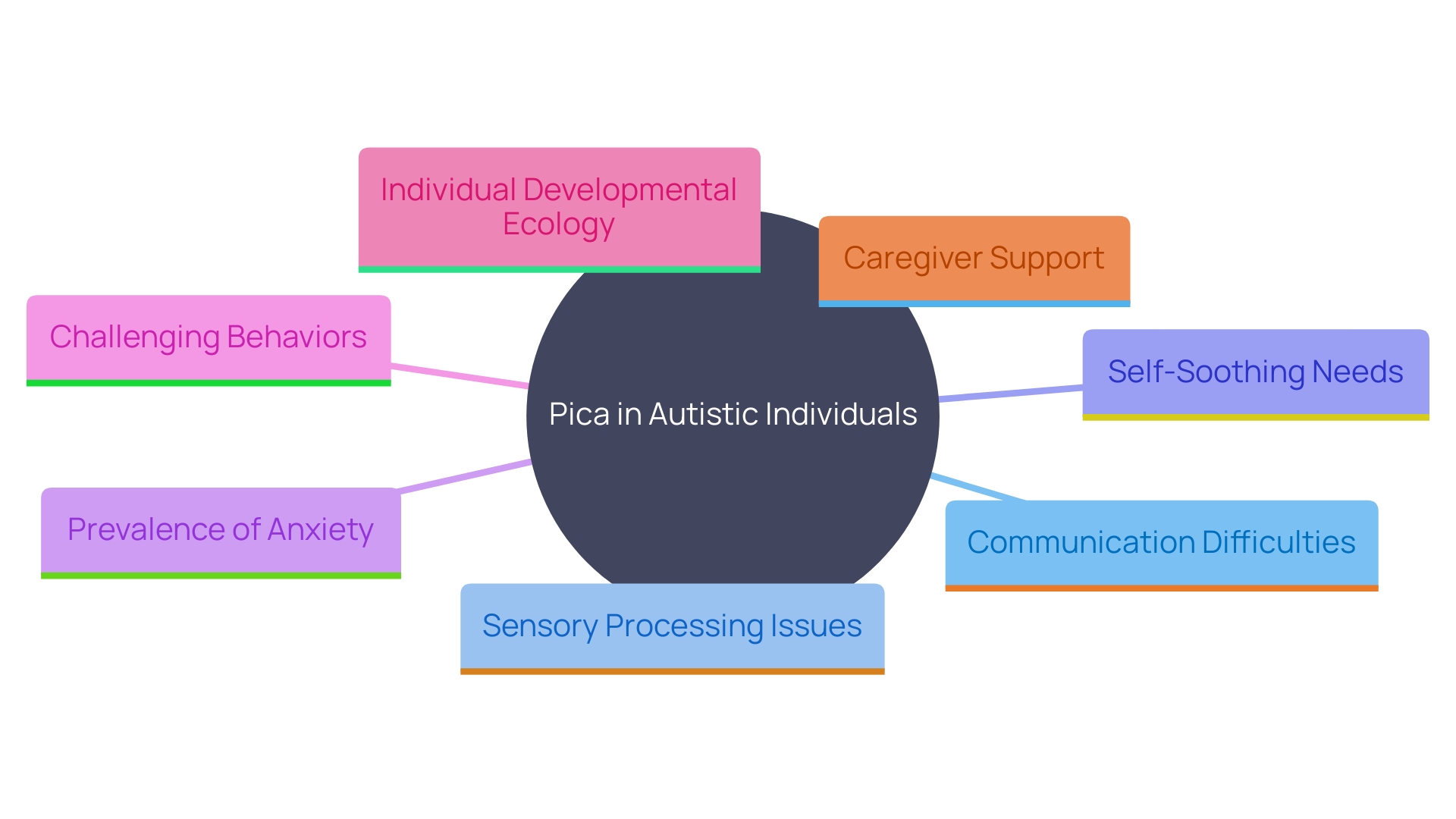
Causes and Theories of Pica in Autism
Comprehending the fundamental reasons for pica in individuals with developmental disorders is essential for creating effective interventions. Pica, the consumption of non-food items, can stem from various factors. One prevalent theory suggests that sensory-seeking actions drive this condition. Children with autism may consume items like dirt or chalk to fulfill specific sensory needs, such as texture or smell. As Dr. Shane emphasizes, “It’s important to understand the behavior and how it influences function and daily routine.”
Nutritional deficiencies are another possible cause. A lack of essential nutrients might lead children to seek out non-food items to fill this gap, as food provides vital micronutrients and minerals. Emotional distress and anxiety can also contribute to this eating disorder. Individuals with developmental differences often face heightened anxiety levels, and consuming non-food items may serve as a coping mechanism. Dr. Karth notes that the condition often coexists with obsessive-compulsive actions, emphasizing the intricate relationship between anxiety and eating disorders.
Addressing these underlying causes is essential for effective intervention. Digestive problems, frequently seen in young individuals with developmental conditions, can also worsen compulsive eating habits. Statistics from the Autism Community in Action indicate that treating these co-occurring medical conditions can significantly improve a child's overall well-being. By identifying the root causes of the eating disorder, caregivers and healthcare professionals can develop targeted strategies to reduce this issue, ultimately enhancing the quality of life for individuals with autism.
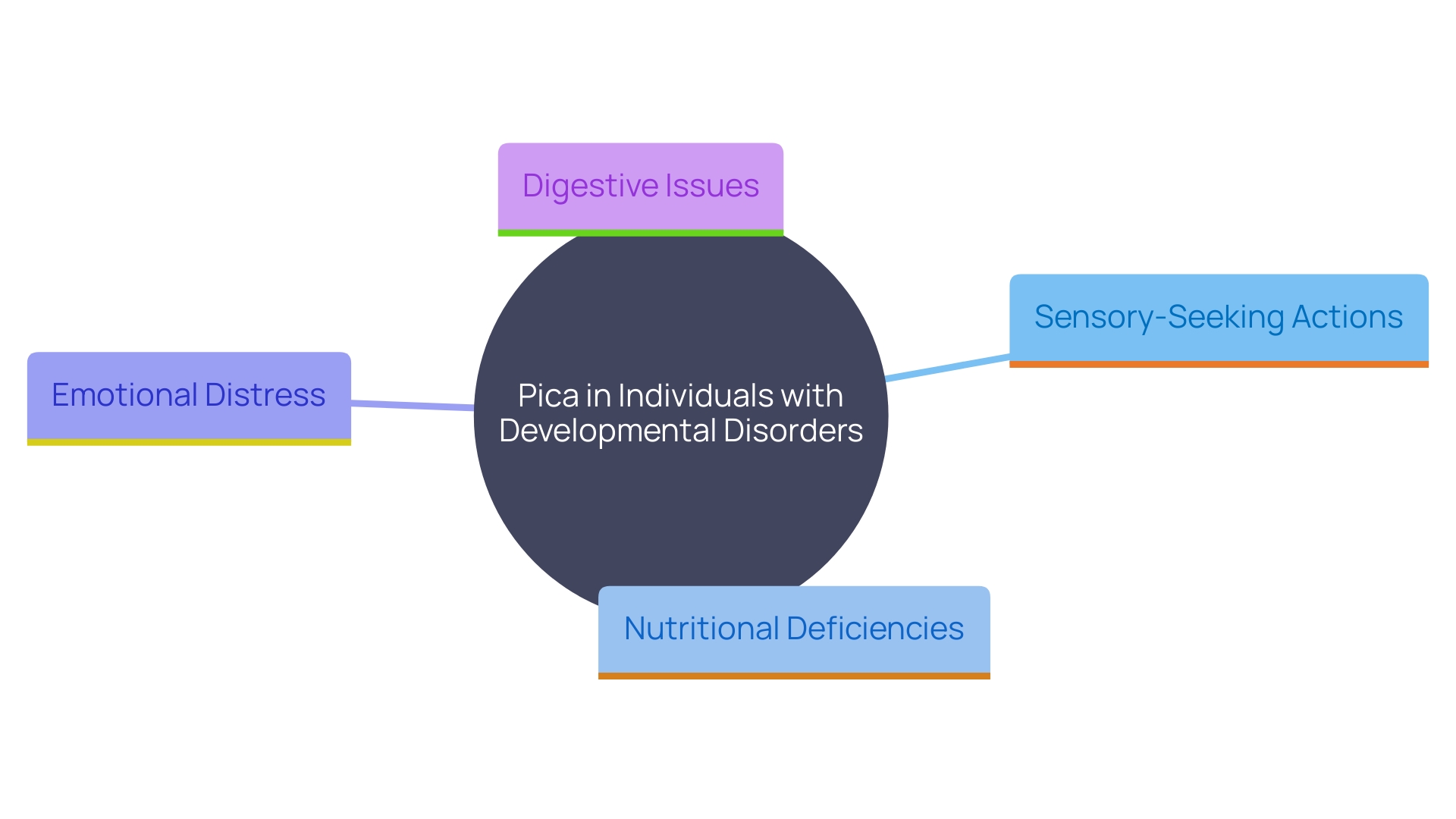
Behavioral Interventions for Pica in Autism
Efficient behavioral strategies for addressing the condition should incorporate positive reinforcement, where suitable actions are rewarded to promote desirable responses. Evidence indicates that these interventions can greatly enhance social communication and decrease difficult actions, with a confidence interval of 0.11 to 1.06 in randomized controlled trials. Functional conduct assessments are crucial in determining the underlying reasons for pica, which can then lead to tailored strategies that reduce its occurrence. A multidisciplinary approach involving analysts, therapists, and other specialists can further enhance the effectiveness of these interventions. This is supported by the growing recognition that the health and development of individuals with autism are influenced by their lived environments, highlighting the importance of comprehensive support systems.
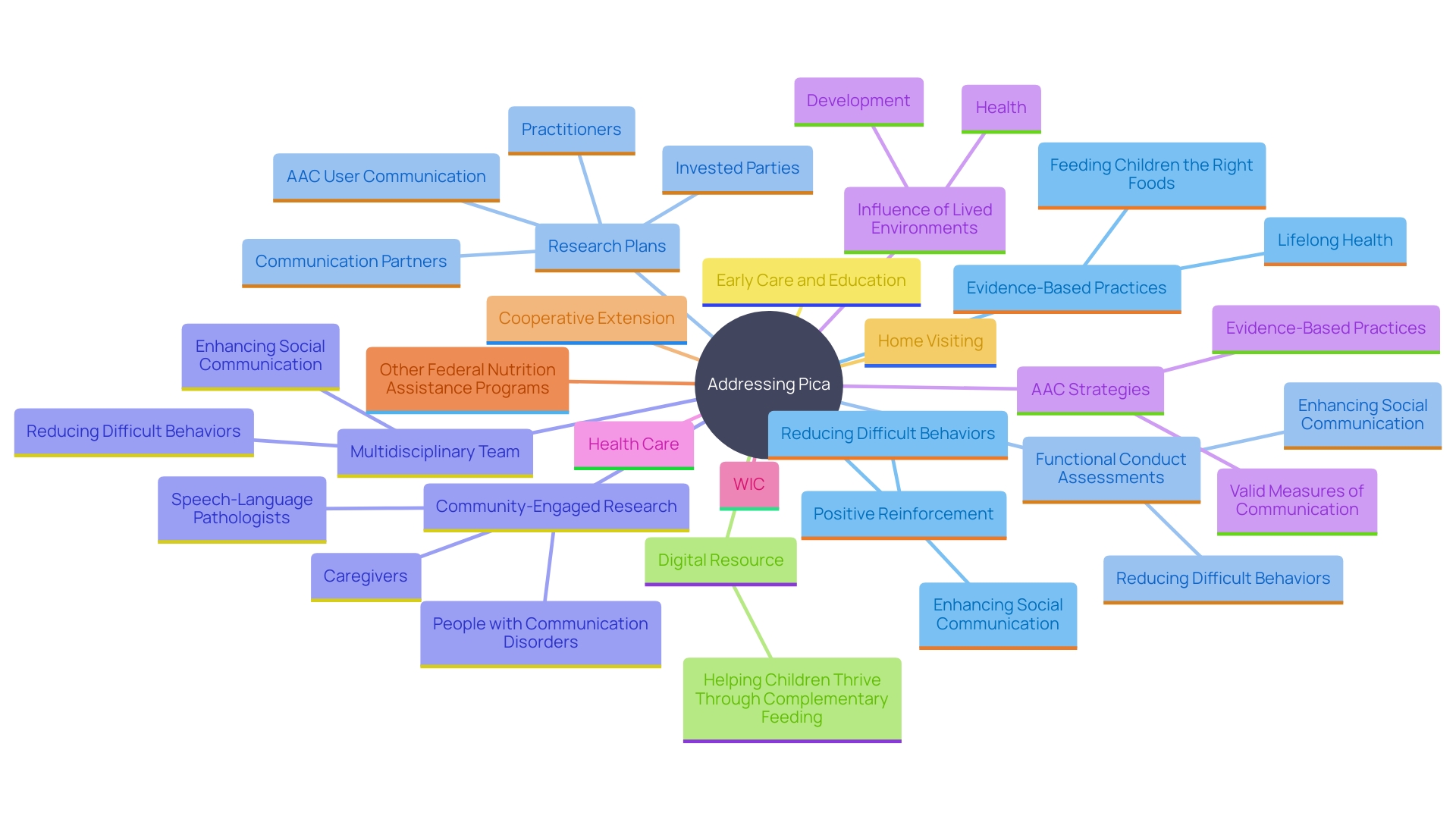
Sensory-Based Approaches for Managing Pica
Sensory-based strategies can play a crucial role in managing eating behaviors in autistic youth. Offering suitable sensory engagement through safe options assists in redirecting the young one's attention away from non-food objects. Engaging activities such as sensory bins, texture exploration, and chewable toys can meet sensory needs without harmful consequences. These methods not only tackle the eating disorder but also encourage overall sensory integration, improving the young one's development and well-being. According to experts, these interventions enhance social interaction and assist young individuals in managing their sensory experiences more effectively.
Strategies for Managing Pica Behavior
Applying uniform approaches at home and in various settings is crucial for handling this condition, particularly in youngsters with autism. Creating a safe environment by removing non-food items within reach and closely monitoring the child is a foundational step. Creating an organized schedule that incorporates regular mealtimes and sensory activities can effectively lessen pica tendencies. Data indicates that naturalistic developmental behavioral strategies, which focus on adaptive skills and social interaction, are advantageous in tackling fundamental issues linked with developmental disorders. Open communication with educators and caregivers about the child’s needs fosters a collaborative approach to managing conduct, ensuring that all stakeholders are aligned in their support efforts. The Interagency Autism Coordinating Committee (IACC) highlights the significance of collaborative efforts and dialogue among different sectors to enhance research and services related to developmental disorders, suggesting the importance of a unified strategy in addressing challenges such as pica.
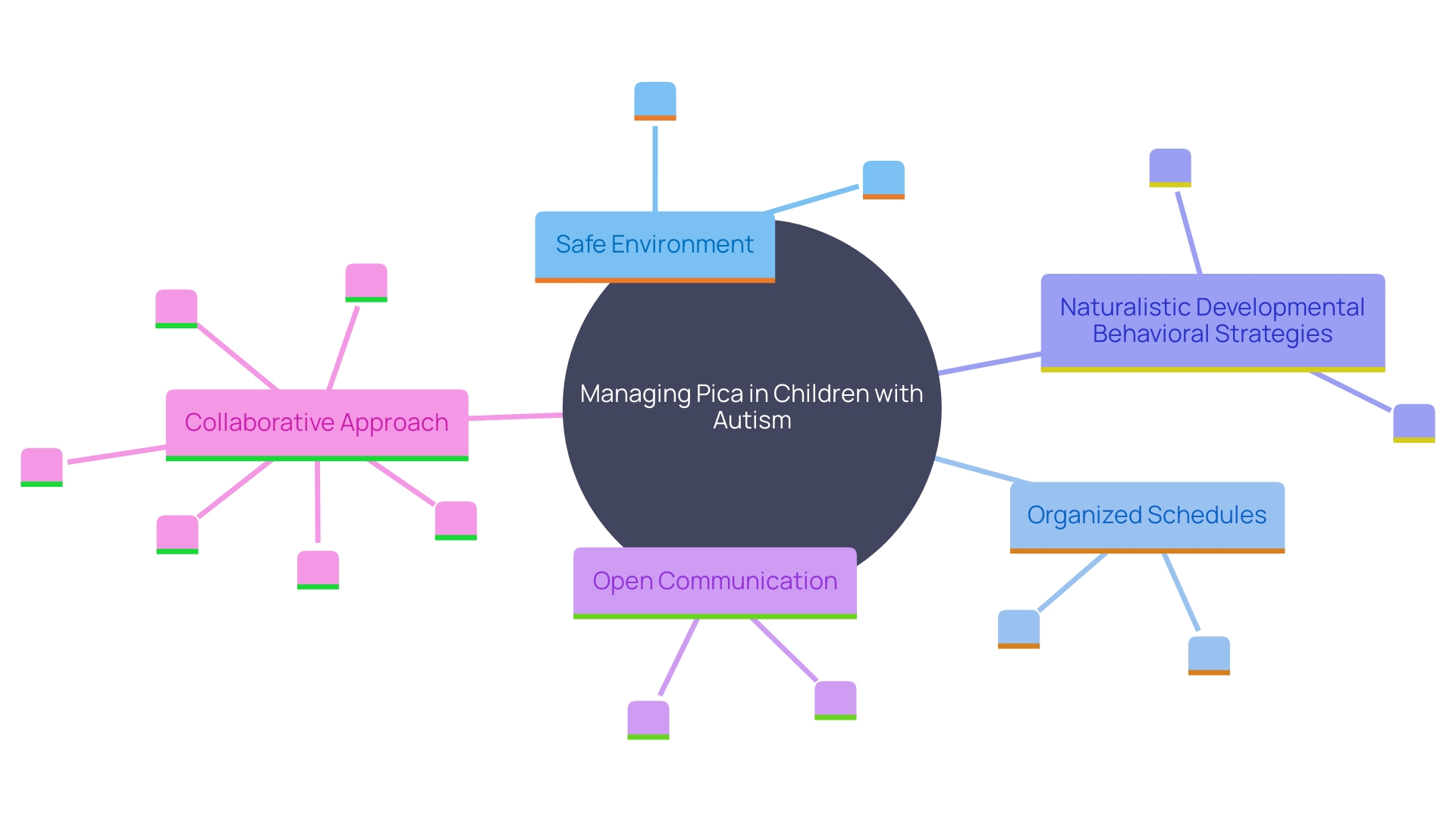
Importance of Early Intervention and Support
Early intervention plays a critical role in addressing pica and its association with autism. Research indicates that responsive and engaging parent-offspring interactions significantly improve social communication and adaptive behavior in autistic youth. Introducing strategies early can result in improved long-term results, with younger individuals demonstrating increased involvement and diversity in language use.
Support from professionals, including therapists and support groups, is invaluable. Research has indicated that even minimal support, involving just 2-3 hours per week, can result in substantial enhancements in both offspring and parent outcomes. Parents in these programs are better prepared to assist their offspring's interactions, fostering a more inclusive and supportive environment.
Building a strong support system benefits not only the child but also provides reassurance and guidance for families. As Jan Stewart, a mental health and neurodiversity advocate, emphasizes, persistence in finding the right help is crucial, as there is always hope and support available for families navigating these challenges.
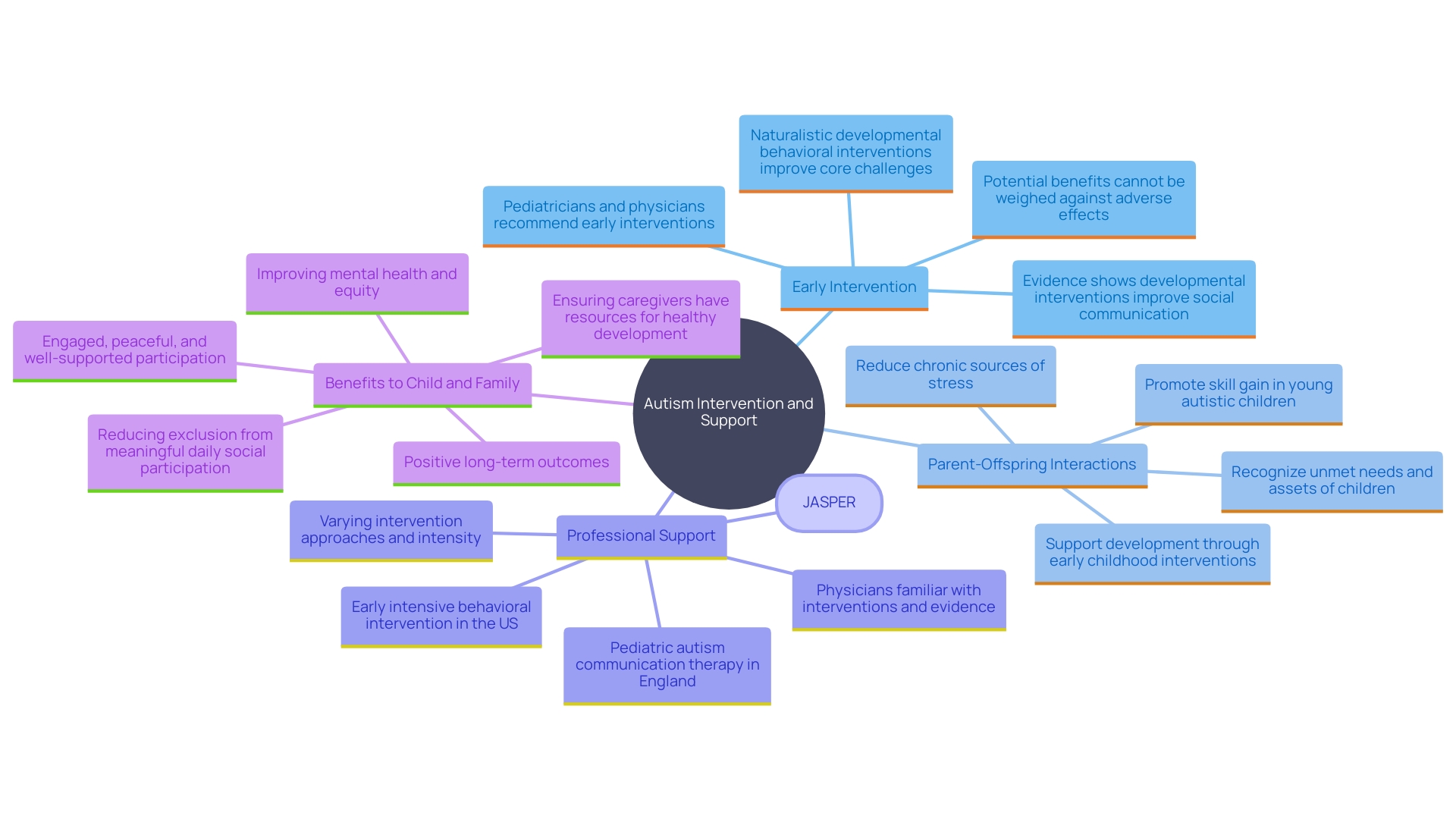
Conclusion
Addressing pica in children with autism is a multifaceted challenge that requires understanding and targeted interventions. Research highlights the increased prevalence of pica among autistic children, linking it to communication difficulties, sensory processing needs, and emotional distress. Recognizing these underlying causes is essential for developing effective strategies that not only mitigate pica behaviors but also enhance overall well-being.
Implementing behavioral and sensory-based interventions can significantly improve outcomes. Positive reinforcement, functional behavior assessments, and sensory stimulation through safe alternatives are crucial components in managing pica effectively. Creating a supportive environment, both at home and in educational settings, fosters collaboration among caregivers and professionals, ensuring that strategies are consistent and tailored to each child's unique needs.
Early intervention plays a pivotal role in promoting positive development and addressing pica behaviors. Engaging with professionals and utilizing support resources can empower families to navigate the complexities of autism and pica. By fostering open communication and building strong support networks, families can create an environment that nurtures their child's growth and well-being, reinforcing the message that there is always hope and help available on this journey.




